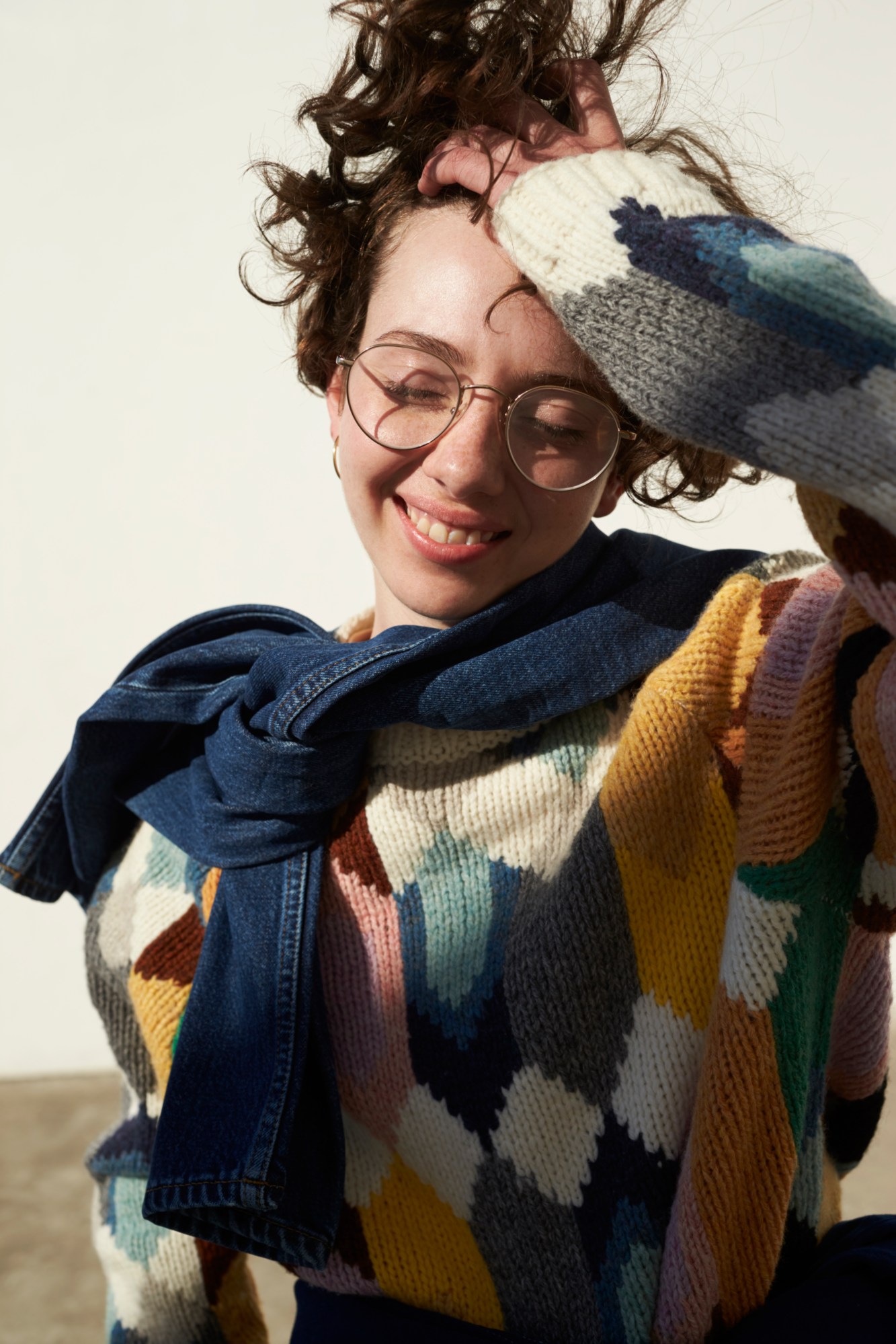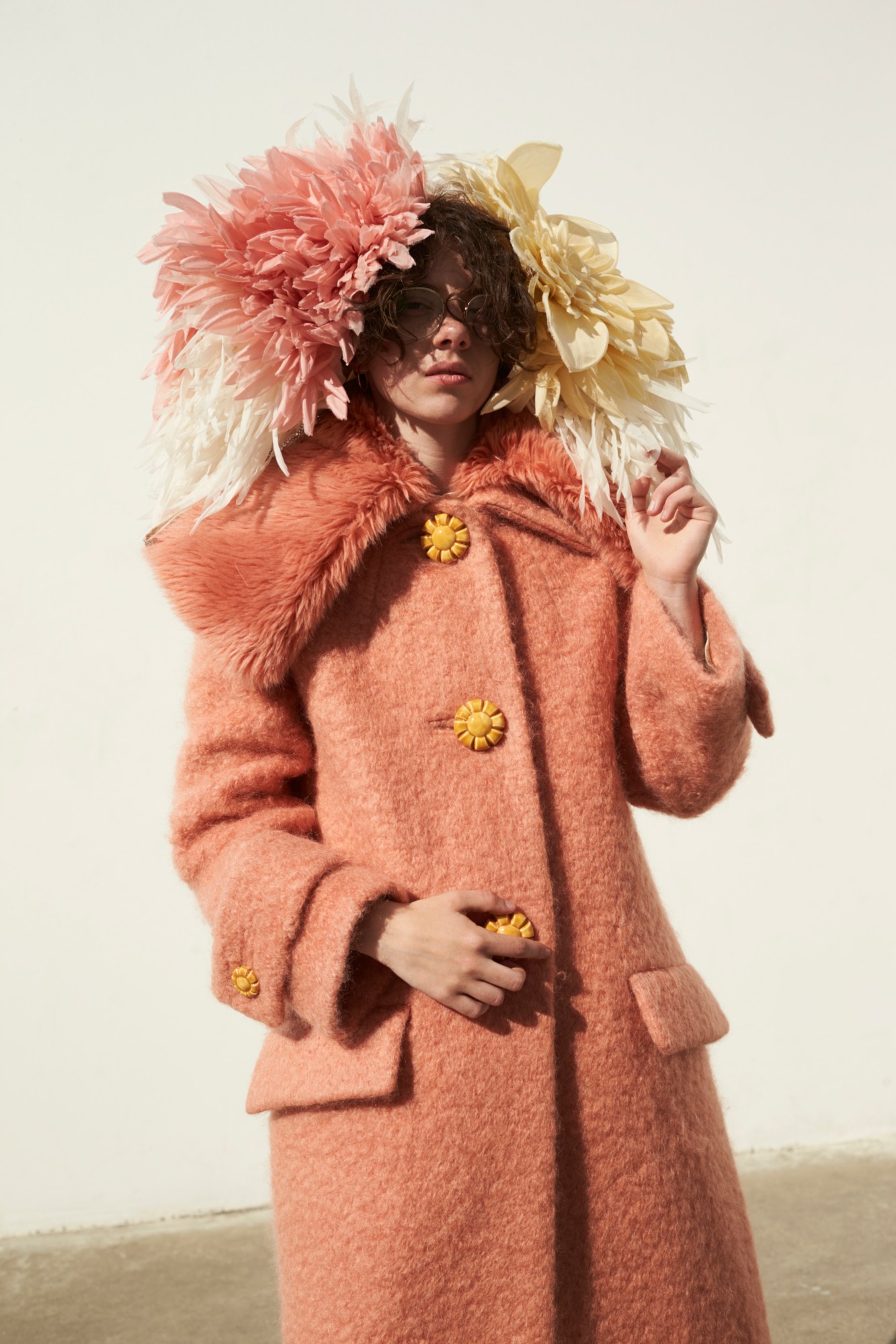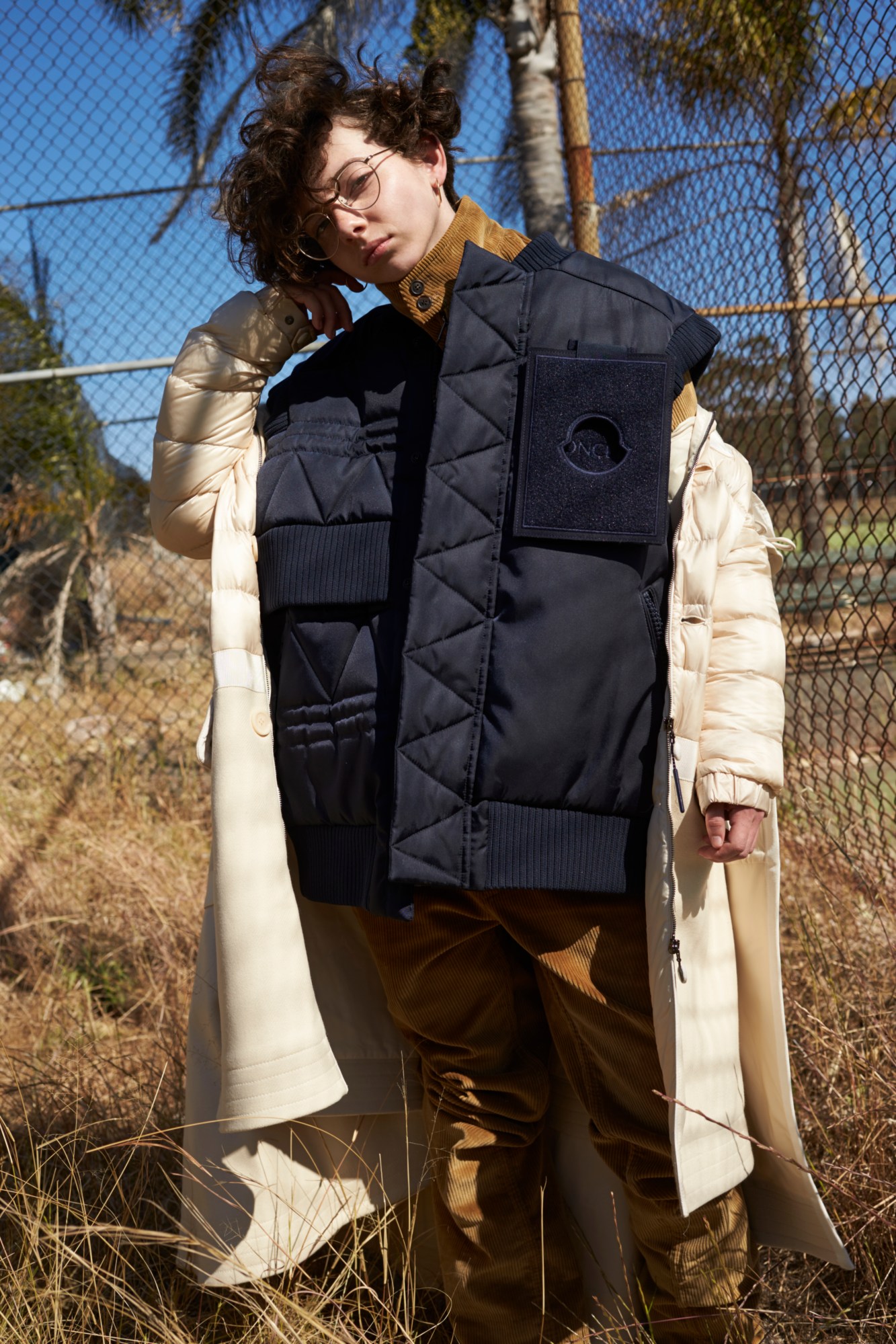It was late one evening in the middle of 2016 that teenager Mika Benesh had a breakthrough. As awe-inspiring as sunsets are at any given time, the line of the nightfall that day was unravelling in a way that was unlike any other that Mika had seen before. As if pushed forward by an invisible hand, they propped up their iPhone to capture the crest of that saturated half-light in a timelapse. From there, a series of photos was born, documenting a scene which they now identify as their “lightbulb” moment, where their aesthetic and ideology found an outlet in artistic practice.
Most people encounter Mika on, of all places, their Instagram. They pepper their visual grid with selfies, modelling shots taken in vitro and other rarities, like candid photos taken within the golden hour, textile details, woozy 35mm portraits, detailed sketches, and previews of their visual art relating to judaism and memorialistic recovery.
Just 18 years old, Mika is an artist and model and represents a swathe of social media users who had grown up in the anthropocene. They are a product of, and advocate for, these curious times. They’ve never known anything except the threat of the finite, of global warming and the lowering of the last sun, or rather, the possibility of armageddon. They also sit at the edge of this contemporary conversation about transness and gender fluidity like it’s a possibility. Not just a concept, a proposal, or a closeting like it once might have been, but a lived consciousness — as much as it is now a sliding scale of contention and debate. i-D took the time to speak to this profoundly reflexive young artist, listening to them as they opened up about their personal and artistic diction and their place in an unfamiliar world.
You’ve done a bit of modelling before, but you’re also an artist. I just wanted to start off by asking quite simply, what sort of trajectory are you on with your art at the moment? What would you say you make, and what are you most interested in?
For the past year or so I’ve found that I’ve been really focusing on drawing, photography and film-making. I suppose it’s a trans-disciplinary approach, just working with a few different mediums — I’m not really satisfied with just one way of expressing myself. I guess I try to concern my art with jewish experiences of memory and thus of post-generational trauma. It’s not something that came to me immediately, but rather as I was making my work and realising the things that were lurking in the back of my mind while I was doing it, and also what sort of drawing references I looked at, sometimes even where I sourced those images from. Some of those references ended up being images my grandfather had taken, or things found in jewish archives. My initial work that I made last year was about memory, and from there I was just wondering like …”what kind of memory is it?” Jonathan Safran Foer says that for Jews memory is more just an imprinted association, it’s a sixth sense. He said that “gentiles experience and process the the world through traditional sense… but a jew asks ‘what does it remember like?'” The more I realised that my relationship to judaism was integral to the art I was making, the more that focus solidified.
It’s heartening to know that it happened in an organic way, and to your credit, you still might have been drawing those thoughts together subconsciously.
I think so. I’m still not sure how I feel about making political art — obviously all work has the inherent political contexts and nuances that go with it, but I never made work to make a statement.
You’ve mentioned that you’re interesting in unearthing archives or trying to revive memories that otherwise might have been ignored, and it’s interesting because that feels so indivisible from jewishness, and gender variance as well. When you consider the kind of scholarship, documents, recordings and written narratives that were purged in Nazi Germany, for example, many depicted early trans and queer narratives.
I think about a lot about the loss of these narratives, particularly when it comes to Bundism. It was basically — from my understanding of it — a diasporic jewish movement from around the late 1800s, and really quite a revolutionary thing in retrospect. They were in direct opposition to Zionism and gained significant political traction in Poland after WW1. Bundists actually used language as a tool, Doikayt, (diasporic “hereness”) promotion of Yiddish versus the Zionist revival of Hebrew. I’ve found a lot of meaning in uncovering these narratives because it shows that there’s so many ways to be Jewish. Jewish people have so often been at the forefront of revolutionary action through history, and to lose sight of that would be a huge loss. Fighting to make the world a better place is so central to Jewish values and practice, and it’s something I try to carry with me as well.

That’s an amazing thing to recognise! On a different note, I know it’s tired to always re-emphasise someone’s age, but as someone who is both jewish and non-binary, do you feel like there’s a pressure to crystallise your identities even younger, that we’ve gone from being widely very phobic of trans/gender diverse identities to now being hyper-aware of them and commodifying them?
In the last few years I’ve noticed a huge cultural shift in young people towards a focus on identity politics which can be really harmful. You’ve got this pressure to really analyse yourself to a level which isn’t necessarily healthy and productive, and to put a label on everything which isn’t always the right thing to do. Personally I try not to think about that — it’s better to focus on your lived experiences. If a label forms around that it’s great, but it’s not something you absolutely have to do.
I think many people feel similarly but are just starting to articulate that. Identities can refer to an inward looking process, and what’s happening there can reflect the external world, but it’s often healthier to see it as a back and forth, an exchange.
It is. I was learning recently that identity is historically identifiable, and when you get people who identify as this hyper-specific thing in relationship to sex, or attraction, that isn’t historically discernible, it’s kind of unnecessary or incoherent. If you go out and talk to gender non-conforming or trans people, these micro-identities don’t have so much bearing on how they experience the world. Like, non-binary isn’t a coherent identity. You and I are both non-binary but the way we experience our gendered worlds are probably quite different.
Agreed. It does feel like that ability to self-narrate and to then call that an indisputable truth is really only accessible to people who are protected from other forms of violence which is often so inescapable.
That’s really true. I have a couple of friends who are transfeminine and identify internally as non-binary, but that has no impact on whether they experience transmisogny, of what it’s like to be out in the world.
Patriarchy arguably works very hard to erase the experience of someone who doesn’t align with one historical unit.
It does, and it’s important to note how that is also rooted colonialism and how it’s imposed on bodies who are colonised to restrict and rationalise them. So as a white person the way I experience gender is totally different to how an Aboriginal Australian person might experience it, because of the way that gender is also racialised. Brotherboys and Sistergirls have their own unique narratives which are different to Western gender diversity and transness.
It does feel like the modern dialogue on trans identity really spotlights white people who can move quite freely towards poles without as much consequence. Like even if we consider how asian men are pacified, and feminine asian men particularly, are seen as hyper-submissive in the gay and trans community, while black women become animalised and inertly coded as aggressive, or totally unreasonable.
Definitely, it’s something I’m mindful of when talking about my own gendered experiences, which I know are very limited. Race and gender aren’t separate from each other, they interact and manifest in different ways.
Do you think there’s cross-over with the way you engage with style and fashion and the way you work creatively?
Possibly… I do love textiles and embroidery and have played with those things in the past. When I was younger I wanted to be a fashion designer, but didn’t we all? I’m making some silk bags with my friend Naomi Segal, slowly but surely. I don’t think I’ll ever be a conventional model. I’m so short, for starters. But if people want to photograph me they’re more than welcome… art’s more my thing!
Do you have any future endeavours you can share with us?
I just want to see where university takes me, see what resources will be available to me in the future and what I’ll do with that. I’m pretty instinctive as a person and as an artist. If something feels right I’ll go in that direction. It’s not a logical thought process. It’s even just a physical act of making that reveals those nuances. I don’t think about it necessarily, I just do it. That’s how I came to conclusions about my art and judaism. But when I started out I wasn’t thinking about that…..If you spend too much time thinking about it instead of doing it can become overwhelming. I started making art because i had this sense of what I wanted to make but didn’t have the skills to make it a reality – there’s an Ira Glass quote where he says that “all of us who do creative work, we get into it because we have good taste. But there is this gap. But your taste, the thing that got you into the game, is still killer.” You have this eye when you’re starting out but you can’t bridge that opening…so I’m trying to do that.






credits
Text Jonno Revanche
Photography Rene Vaile @ Union Management
Fashion Charlotte Agnew
Hair and Makeup Corinna Wilmshurst
Talent Mika Benesh
Fashion assistant Shakirra Mae
